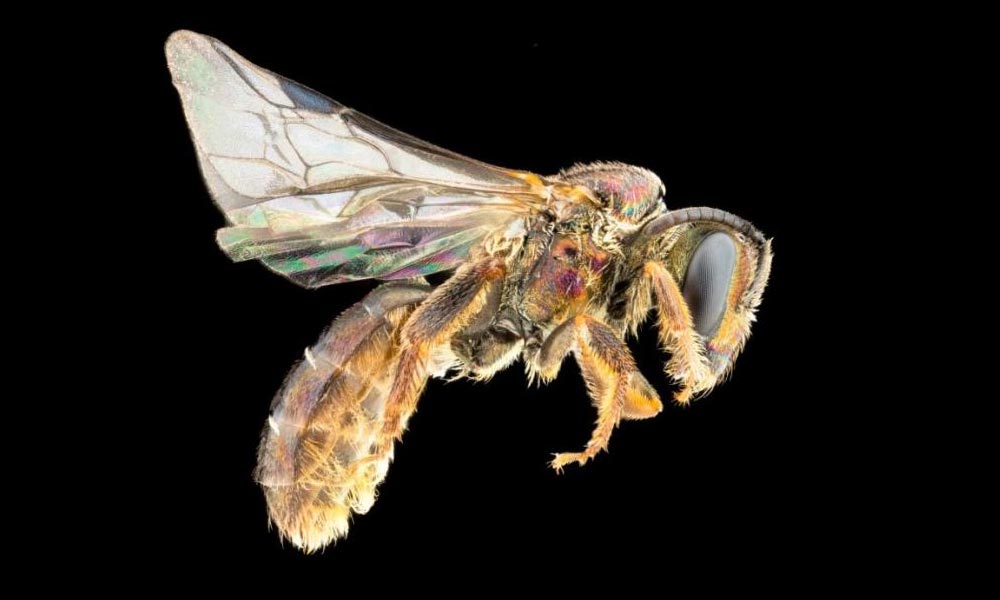Newly-discovered bee species in Fiji are already showing signs of exposure to environmental changes.

Image credits James Dorey / Flinders University.
As researchers at the Flinders University, Adelaide, Australia are discovering new bee species endemic to the Fiji archipelago, they’re already reporting signs of climate- and environment-related stress. Some of the main threats for these species are climate change, noxious plants, and multiple human activities that are impacting their habitat.
Beeing under pressure
“A likely driver of this possible extinction is changing climates,” says Flinders University Associate Professor Mike Schwarz, a co-author on the paper.
University students from South Australia have been working in Fiji for several years now as part of the Australian Government’s New Colombo overseas study program. The field trips taken as part of the program are definitely worthwhile. Students were able to redescribe four known bee species and describe nine new ones according to Dr. Mark Stevens, South Australia Museum senior researcher on terrestrial invertebrates.
The species are part of the Homalictus subgenus of bees, a group whose range includes Sri Lanka and Southeast Asia, and extends east across the Pacific to Australia, Samoa, and the Mariana Islands. Some of these animals, such as the bee Homalictus cockerell have not been taxonomically reviewed in the Fijian archipelago for 40 years. But, some of these species are already showing signs of exposure to environmental change.
The field trips taken as part of the program are definitely worthwhile. Students were able to redescribe four known species of bees and describe nine new ones according to Dr. Mark Stevens, South Australia Museum senior researcher on terrestrial invertebrates. Some of these animals, such as the bee Homalictus Cockerell has not been taxonomically reviewed in the Fijian archipelago for 40 years.

Image credits James Dorey / Flinders University.
Fiji’s bees rely on unique habitats created by the mountains in the area. “Most of the species diversity (11 species) live 800 meters or more above sea level, which highlights the vulnerability of highland-restricted species to a warming climate,” explains Dr. Stevens.
Homalictus achrostus, featuring unusual large mandibles, is one of the most interesting bee species endemic to Fiji. Like many Fijian bee species, H. achrostus has only ever found on a single mountain top. The team christened of its relatives Homalictus terminalis in an effort to raise awareness of how close to extinction it is hovering currently, and of how dire the situation is for the subgenus.
“Homalictus terminalis is named so to indicate that, like many Fijian bees, it is nearing its limit and is at risk of climate-related extinction,” says lead author James Dorey, a Ph.D. candidate at the Flinders University. “Found only on Mount Batilamu near the city of Nadi, where many tourists launch their holidays, H. terminalis has only been found within 95 metres of the mountain peak.”
“Six individuals were collected on Mount Nadarivatu in the 1970s and two in 2010, but despite frequent searching almost every year since no more have been found,” says Associate Professor Schwarz.
The mountains that dot Fiji create highland ecosystems that are unique in the area. These colder ecosystems, however, could be slowly pushed upwards and off the top of the mountains, which would spell disaster for the species adapted to living in the particular microclimates of today.
The findings, the team explains, raise “real concerns about the extinction of many highland species in Fiji and across all of the tropics,” and showcase yet again the strain our emissions are putting on biodiversity, ecosystems, and the health of the planet at large.
The paper “Review of the bee genus Homalictus Cockerell (Hymenoptera: Halictidae) from Fiji with description of nine new species” has been published in the journal Zootaxa.


